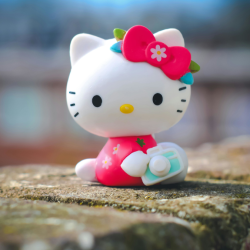I couldn’t get through Proust. I tried. Ready for a long-haul flight to the States, I packed a copy of Swann’s Way and nothing else. After so many pages I ended up watching Jake Gyllenhaal in Prince of Persia and some other god-awful film I don’t even remember. I remember very little about Prince of Persia either, aside from it featuring Jake Gyllenhaal. But despite barely creasing the spine of Marcel’s masterpiece, I got the gist. It’s all about a biscuit, right? A tasty one he remembers quite fondly. Of course, the last thing I want to do is reduce Mr P’s voluminous sick-bed masterpiece to a single word, but for the purposes of this piece, I will. It’s about nostalgia. There. I did it.
The power of nostalgia
Of course, the reason we all know about Proust’s book and not Gyllenhaal’s problematic computer game adaptation, is because we all recognise the feeling of nostalgia, of longing for something we felt in the past. Far fewer of us remember being a whitewashed swashbuckling prince in what is now Iran. Indeed, nostalgia is a powerful thing and, as evidenced by Proust’s narrator salivating and remembering things past all because of a perfumed piece of patisserie, it can be triggered by almost anything. Music, for example: every time I hear an American band called The Dismemberment Plan, I’m reminded of student days playing punk rock in Leeds. An article of clothing: every time I see a shell suit, I’m reminded of being a kid in a knock-off Umbro ‘tracky’ watching England play football. Or, as with Proust, food: I have a friend who once ate a burger so good, he licks his lips whenever a lesser burger reminds him of it.
Advertising already understands this. And by advertising, I mean you, dear reader. You do work in advertising, right? Why else would you be reading this; are you insane? You know, insane like ‘Howling Mad’ Murdock in the A-Team, which reminds you of Saturday evenings at your parent’s house when the theme tune would come on…duuh..duh..duh…duuuuuuhhh…and damn it, there’s that nostalgia. See, it gets you, doesn’t it? And what’s important for those of us who do work in advertising to understand is that it gets you to an emotional place quick smart. And, as I know you definitely know, when it comes to successful advertising, getting to emotions is the whole aim of the game.
Sure, logic might help us to support a buying decision
It helps us to justify it (whether that’s to ourselves, or to the loved one who seems less taken by the colossal 60-inch super-deluxe 5D television you just had to pick up in the sale). But the buying decision is always made by your emotions. And yes, fear and greed are still the most powerful of those emotions. I know some would say it’s love and not greed, but we’re gonna need to have a proper sit down and a long, honest chat about whether love has anything to do with influencing people in advertising. The harsh reality is that most emotionally motivated buying decisions—and therefore, most buying decisions full stop—are driven by the fear of missing out on something, or greed to have more of it. But, as the late Mark Fisher (sadly not related) pointed out in a much more erudite, evidenced, and eviscerating way, what leads us to those emotions, and perhaps one of the biggest catalysts of human behaviour generally in our modern times, is nostalgia.
Don’t get me wrong, it ain’t pretty. Spending too much time in the past will surely prevent us from exploring a possibly better future. Again, my namesake wrote about this in a much cleverer way (without using the word ‘cleverer’) and, if your business is in understanding people i.e., advertising, I urge you to read him. But when it comes to leading people to experience the emotions that drive them — be it fear, greed, excitement, joy, envy, or one of the many more in the deep-feelings directory — understanding how nostalgia can trigger those emotions is an incredibly powerful tool to have in your metaphorical belt. Like I say, it might not be pretty, but that’s the way the madeleine crumbles.
Featured image: Stranger Things / Netflix




























